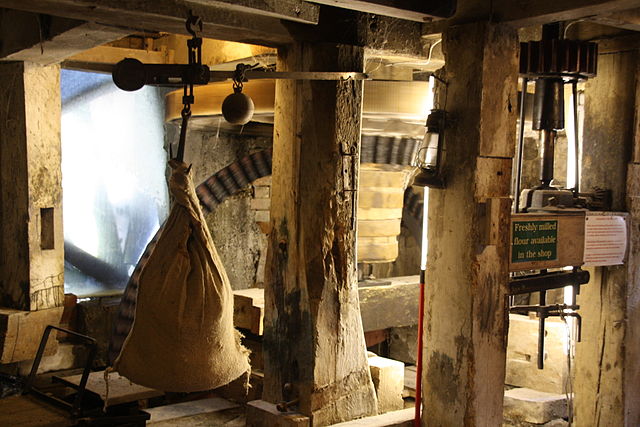A ship mill, more commonly known as a boat mill, is a type of watermill. The milling and grinding technology and the drive (waterwheel) are built on a floating platform on this type of mill.
Its first recorded use dates back to mid-6th century AD Italy.
The ship mill at Minden, Germany
A ship mill (drawing 1 after H.Ernst, 1805)
A ship mill (drawing 2 after H.Ernst, 1805)
German ship mills on the Rhine at Cologne, around 1411
A watermill or water mill is a mill that uses hydropower. It is a structure that uses a water wheel or water turbine to drive a mechanical process such as milling (grinding), rolling, or hammering. Such processes are needed in the production of many material goods, including flour, lumber, paper, textiles, and many metal products. These watermills may comprise gristmills, sawmills, paper mills, textile mills, hammermills, trip hammering mills, rolling mills, wire drawing mills.
Watermill of Braine-le-Château, Belgium (12th century)
Interior of the Lyme Regis watermill, UK (14th century)
Model of a Roman water-powered grain mill described by Vitruvius. The millstone (upper floor) is powered by an undershot waterwheel by the way of a gear mechanism (lower floor)
Roman turbine mill at Chemtou, Tunisia. The tangential water inflow of the millrace made the horizontal wheel in the shaft turn like a true turbine, the earliest known.








